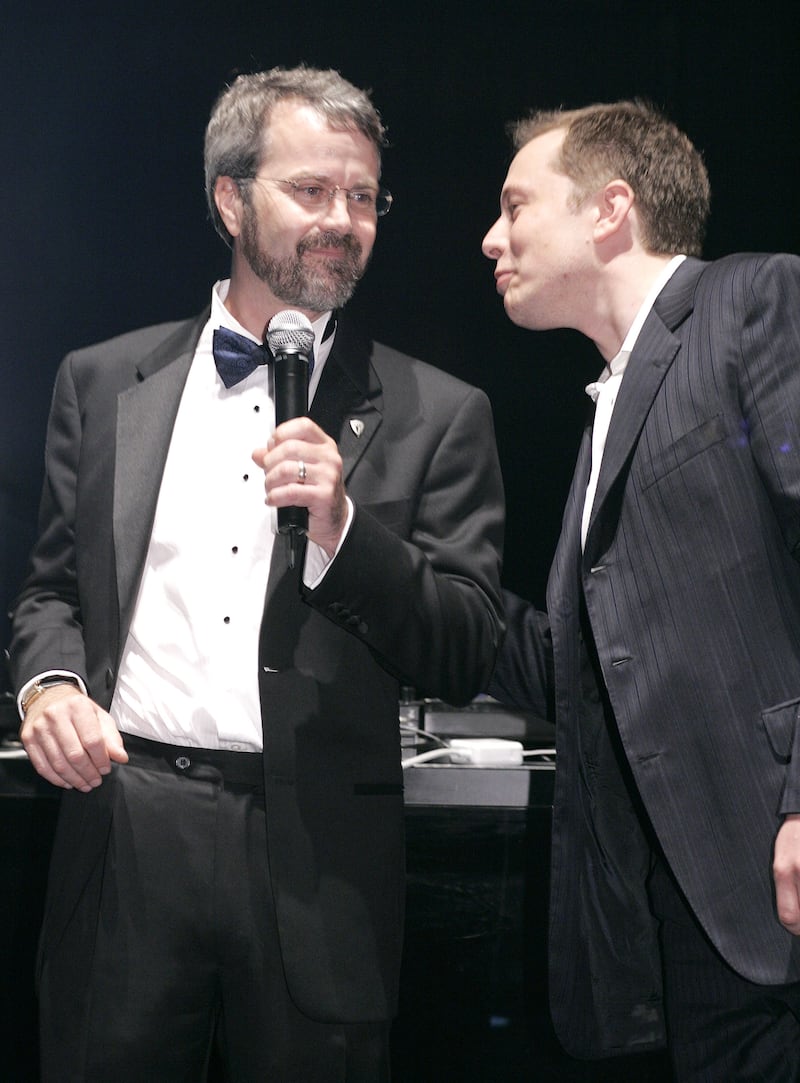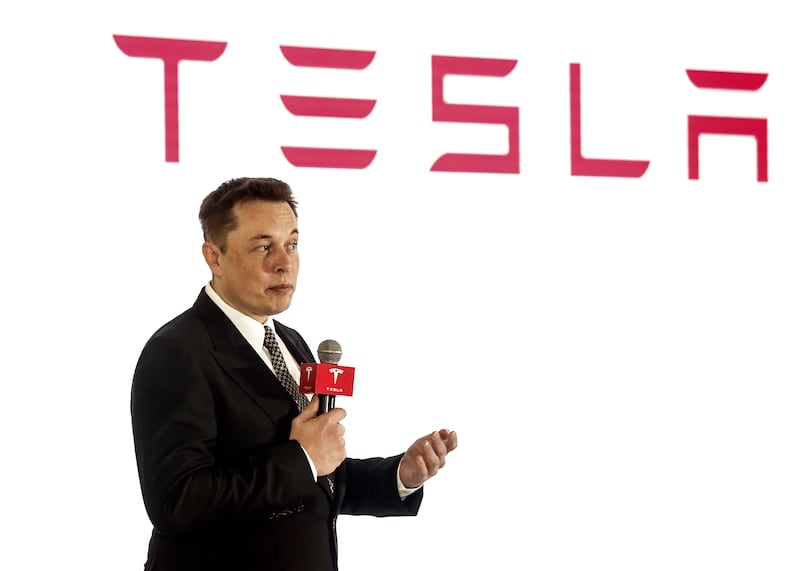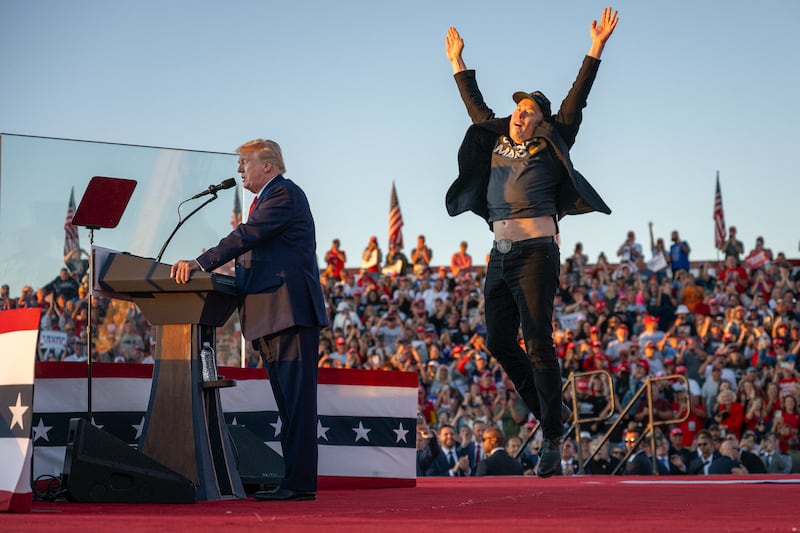Et tu, Elon?
As he considers how to mitigate the damage from his fallout with Elon Musk, Donald Trump would be well-advised to examine the origins of Tesla, the company most closely associated with the world’s richest man and the main source of his enormous wealth.
Tesla Motors, as it was originally known, was founded on July 1, 2003, by software engineers Martin Eberhard and Marc Tarpenning in San Carlos, California. Their dream was to build a cool electric roadster to replace the clunky, battery-bleeding, glorified golf carts being produced by established automakers.
The Tesla founders bootstrapped their debut prototype before launching their first investment round in February 2004. At around this time, Elon Musk, with pockets full of cash from the sales of PayPal and Zip2, was looking for new projects to invest in and was intrigued by Tesla. He coughed up $6.5 million of the $7.5 million raised.

Musk wasn’t a founder, but he bought his way into the car business. His wealth was also sufficient to secure him the position of Tesla’s chairman of the board. It wasn’t long before he took the company for his own.
By late 2007, Eberhard had been ousted as CEO. Tarpenning left a little while later.
Musk, the new CEO, took the Model S, Model X, and Model 3 to the well-heeled masses—and to massive success. He also left anger and acrimony in his wake. Eberhard would later sue for defamation and wrongful termination.

Fast forward to early 2024, and Musk was ambivalent about Trump’s presidential re-election ambitions, announcing in March that he wouldn’t be donating to either party. It wasn’t until the assassination attempt on Trump in Butler, Pennsylvania, that July that he changed his mind. Minutes after Trump was bundled from the stage by Secret Service agents with blood pouring from an ear wound and his clenched fist aloft, Musk endorsed the Republican nominee. Even more importantly, he committed $45 million to a mega Trump fundraiser, America PAC.
By August, Musk was suggesting that Trump should put him in charge of a commission based on “government efficiency.” The idea of DOGE was born, and Musk declared himself “willing to serve.”
In October, the Tesla boss shared the stage with Trump on his return to Butler and leaped up and down, saying he was “dark MAGA” to the discomfort of the nominee and his advisors. If Trump had any reservations, he was appeased by Musk’s offer to pay $1 million a day to voters supporting him in swing states.
Musk was fully immersed in Trump’s final campaign rundown and was at Mar-a-Lago to watch the results. The “First Buddy” began spending almost every day with the president-elect. There was so much talk of “President Musk” in December that Trump felt bound to come out and insist: “No, he’s not taking the presidency. That’s not happening.”

The whispers out of the White House after the inauguration suggested that all was not well with the relationship. Musk wasn’t so happy to be Robin to Trump’s Batman anymore. Not a dynamic duo. He saw himself more in the mold of a genius inventor and playboy like "Iron Man" Tony Stark.
There were reports of flare-ups with Cabinet members, Musk going rogue with flurries of posts on his X platform, bitchy feuds with the likes of Peter Navarro and Steve Bannon, and Musk being omnipresent at the White House, bringing son X into the Oval Office, dumping USAID into the “wood chipper” and going full chainsaw on entire federal departments.
To his obvious bemusement, Musk was no longer the hero. Worse, he was the villain people loved to hate. He was Doctor Doom. And his Teslas took the brunt of his unpopularity.
For a time, it served Trump to have Musk as the focus of criticism of the shock and awe launch of his second term. Meanwhile, Musk was smart enough to know that his privileged position at the heart of power meant he had to toe the line, at least some of the time.
When the House passed Trump’s “One Big, Beautiful Bill,” Musk tempered his reactions at first. But when he realized how his Oval Office Bro had fully jettisoned Biden’s clean air tax credits, he lost his cool.
Two weeks later, with Musk’s ties to the White House officially cut, he felt no such inhibition. Eliminating the clean air tax credits would pummel his Tesla and SpaceX businesses.
Make no mistake, Trump’s entire agenda relies on the passage of this bill. But when he’s being drowned out by Musk’s bullhorn, it’s more difficult to herd his sheep down the Hill.
Trump can talk as often and as loudly as he likes from his Oval Office pulpit, but rhetoric and executive orders can only take you so far. This is still a country built on laws, even if some judicial foundations seem rattled and shaky right now.

Trump can bully lawmakers behind the scenes, threatening pop-up primaries for disobedience and disloyalty. But so can Musk. He already did. The midterms may be a year and a half away, but they will determine Trump’s legacy.
Trump could continue operating as the Republicans’ all-powerful Caesar, or he could serve out his time as a lame duck leader with the knives out for him in every direction, blue states and red.
Trump’s silence over Musk’s explosive challenge to his spending bill suggests he is, for once, thinking very carefully about his next move.
So far, he has chosen to keep Musk on his side of the sandbox, even as he pushes him away. The president is no fool. He knows it is better to keep a Brutus close, but that leaves him with a quandary.
Will Trump finally stick the knife into Musk and leave him for dead?
Or will it be the other way around?







